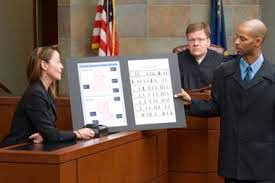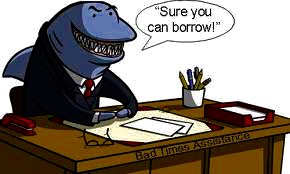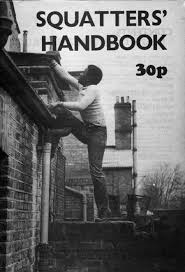Bronson v Hewitt 2010 BCSC 169 reviewed the law of adverse inference, which probably is not utilized as much by counsel as they could.
It typically arises when a key witness who would normally be expected to testify, does not.
Adverse Inference
[323] The plaintiffs submit that the court should draw an adverse inference against both Eugene and Howard from Eugene’s failure to testify at trial. They submit that given Eugene’s role in these proceedings, his evidence is crucial in regard to several matters at issue. In support of their submission, they cite Sopinka, S.N. Lederman and A.W. Bryant, The Law of Evidence in Canada, 2d ed. (Toronto: Butterworths, 1999) where the authors state at 297:
In civil cases, an unfavourable inference can be drawn when, in the absence of an explanation, a party litigant does not testify, or fails to provide affidavit evidence on an application, or fails to call a witness who would have knowledge of the facts and would be assumed to be willing to assist that party. In the same vein, an adverse inference may be drawn against a party who does not call a material witness over whom he or she has exclusive control and does not explain it away. Such failure amounts to an implied admission that the evidence of the absent witness would be contrary to the party’s case, or at least would not support it.
[324] The defendants submit that such an inference should not be drawn in this case. Mr. Dives on behalf of Eugene notes that Eugene is not simply a witness, but also a party and, more importantly, a defendant in a case in which the plaintiff bears the burden of proof. He submits that a defendant is entitled to say: “you have not made out your case so there is nothing to answer.” He submits that the plaintiffs’ submission is an attempt to shift the burden of proof by making the defendant respond to matters that the plaintiffs have not proved.
[325] In R. v. Jolivet, 2000 SCC 29, [2000] 1 S.C.R. 751, the court at paras. 25-28
reviewed the principles governing the drawing of adverse inferences:
25. The general rule developed in civil cases respecting adverse inferences from failure to tender a witness goes back at least to Blatch v. Archer (1774), 1 Cowp. 63, 98 E.R. 969, where, at p. 65, Lord Mansfield stated:
It is certainly a maxim that all evidence is to be weighed according to the proof which it was in the power of one side to have produced, and in the power of the other to have contradicted.
26. The principle applies in criminal cases, but with due regard to the division of responsibilities between the Crown and the defence, as explained below. It is subject to many conditions. The party against whom the adverse inference is sought may, for example, give a satisfactory explanation for the failure to call the witness as explained in R. v. Rooke (1988), 40 C.C.C. (3d) 484 (B.C.C.A.), at p. 513, quoting Wigmore on Evidence (Chadbourn rev. 1979), vol. 2, at para. 290:
In any event, the party affected by the inference may of course explain it away by showing circumstances which otherwise account for his failure to produce the witness. There should be no limitation upon this right to explain, except that the trial judge is to be satisfied that the circumstances thus offered would, in ordinary logic and experience, furnish a plausible reason for nonproduction. [Italics in original; underlining added.]
27. The party in question may have no special access to the potential witness. On the other hand, the “missing proof” may lie in the “peculiar power” of the party against whom the adverse inference is sought to be drawn: Graves v. United States, 150 U.S. 118 (1893), at p. 121. In the latter case there is a stronger basis for an adverse inference.
28. One must also be precise about the exact nature of the “adverse inference” sought to be drawn. In J. Sopinka, S. N. Lederman and A. W. Bryant, The Law of Evidence in Canada (2nd ed. 1999), at p. 297, para. 6.321, it is pointed out that the failure to call evidence may, depending on the circumstances, amount “to an implied admission that the evidence of the absent witness would be contrary to the party’s case, or at least would not support it” (emphasis added), as stated in the civil case of Murray v. Saskatoon, [1952] 2 D.L.R. 499 (Sask. C.A.), at p. 506. The circumstances in which trial counsel decide not to call a particular witness may restrict the nature of the appropriate “adverse inference”. Experienced trial lawyers will often decide against calling an available witness because the point has been adequately covered by another witness, or an honest witness has a poor demeanour, or other factors unrelated to the truth of the testimony. Other jurisdictions also recognize that in many cases the most that can be inferred is that the testimony would not have been helpful to a party, not necessarily that it would have been adverse: United States v. Hines, 470 F 2d 225 (3rd Cir. 1972), at p. 230, certiorari denied, 410 U.S. 968 96 (1973); and the Australian cases of Duke Group Ltd. (in Liquidation) v. Pilmer & Ors, [1998] A.S.O.U. 6529 (QL), and O’Donnell v. Reichard, [1975] V.R. 916 (S.C.), at p. 929.
[326] In this case, counsel for both Eugene and Howard offered explanations for their decision not to call Eugene. Mr. Dives advised that Eugene was not called because, in his view, there was no case to meet. Further, he says the expenses involved in bringing Eugene from Florida to testify at the trial would have been significant. He did not suggest, however, that Eugene’s attendance was financially impossible.
[327] Mr. Harris, on behalf of Howard, further advised that he had no special access to Eugene as a witness and had no way of compelling his attendance. He does not suggest, however, that Eugene would have refused to testify on Howard’s behalf if asked.
[328] Both Mr. Dives and Mr. Harris note that Eugene was extensively examined for discovery and the nature of his evidence is known to the plaintiffs. They submit that if the plaintiffs thought that Eugene’s evidence would be of assistance to them they should have taken steps to compel his attendance pursuant to the adverse witness rule (Rule 40(17)).
[329] As noted by Saunders J.A. in Buksh v. Miles, 2008 BCCA 318 at para. 30, 83 B.C.L.R. (4th) 162, the notion of adverse inference is related to the best evidence rule. The inference should only be drawn in regard to the non-production of witnesses whose testimony would be superior in respect of the facts to be proved.










